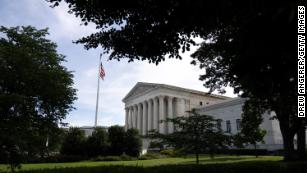6 Amazon employees reveal what's driving people to quit, as the company reportedly worries it's burning through workers so fast that it could run out of people to employ

Amazon burns through hourly employees so quickly that execs worry about running out of people, the NYT reports.
Insider spoke to 6 current and former Amazon employees who explained why they think turnover is high.
They all cited similar issues, including surveillance, the monotonous nature of the work, and burnout.
insider@insider.com (Ben Gilbert)

© Ben Gilbert/Business Insider An Amazon fulfillment center employee in Staten Island, NY. Ben Gilbert/Business Insider
Amazon burns through hourly employees so quickly that execs worry about running out of people, the NYT reports.
Insider spoke to 6 current and former Amazon employees who explained why they think turnover is high.
They all cited similar issues, including surveillance, the monotonous nature of the work, and burnout.
Amazon has been hiring hundreds of thousands of workers for roles in its warehouses, which it calls fulfillment centers, but those employees have been quitting almost as fast as they can be hired, according to a recent report from The New York Times.
Many of the over 350,000 workers Amazon hired from July to October stayed with the company "just days or weeks," the report said.
An Amazon warehouse employee in Michigan told Insider that "almost everybody I know [at Amazon] is looking for another job."
Insider spoke with half a dozen current and former Amazon employees across the country who work in a variety of fulfillment center roles about why they think the company has such high attrition rates. They all cited similar issues: The monotonous nature of the work, the surveillance of their productivity, and rapid burnout. Though they requested to remain anonymous, Insider confirmed their identities and verified their employment records.
"I lasted longer than anybody else in my group that had started" at the same time, a former seasonal employee in Washington, who worked at a fulfillment center from September to October 2020, told Insider. "The entire group of people that I was hired with did not make it two weeks. I was literally the only one [of 23 people]."
Specifically, the current and former employees pointed to entry-level warehouse jobs as most ripe for turnover, including "pickers" - the people who pick items for orders, pack those orders into boxes, and get those boxes loaded into trucks.
"It's super tedious, and no one wants to do it," the employee in Michigan said.
Many of the over 350,000 workers Amazon hired from July to October stayed with the company "just days or weeks," the report said.
An Amazon warehouse employee in Michigan told Insider that "almost everybody I know [at Amazon] is looking for another job."
Insider spoke with half a dozen current and former Amazon employees across the country who work in a variety of fulfillment center roles about why they think the company has such high attrition rates. They all cited similar issues: The monotonous nature of the work, the surveillance of their productivity, and rapid burnout. Though they requested to remain anonymous, Insider confirmed their identities and verified their employment records.
"I lasted longer than anybody else in my group that had started" at the same time, a former seasonal employee in Washington, who worked at a fulfillment center from September to October 2020, told Insider. "The entire group of people that I was hired with did not make it two weeks. I was literally the only one [of 23 people]."
Specifically, the current and former employees pointed to entry-level warehouse jobs as most ripe for turnover, including "pickers" - the people who pick items for orders, pack those orders into boxes, and get those boxes loaded into trucks.
"It's super tedious, and no one wants to do it," the employee in Michigan said.

© Ben Gilbert/Business Insider An Amazon fulfillment center employee in Staten Island, NY. Ben Gilbert/Business Insider
"As a picker, they want you to pick 4,000 items a shift ... and you're stuck at one station for 10 hours with two 30-minute breaks," they said. "You're sore at first, and you think it's okay. Imagine working here four days a week, you're doing that same thing over and over again: Picking 4,000 items. It wears out."
Amazon employees also cited the company's notoriously dogged approach to efficiency, in which the company uses technology to track workers' productivity and timeliness. Being just five minutes late to clocking in results in a write-up from management, several employees said.
"You're constantly trying to defend your employment," a former Amazon employee in California told Insider.
Prior to the pandemic, hourly employees had a turnover rate of about 3% weekly, or roughly 150% annually, data reviewed by The Times indicated. That reportedly led some Amazon executives to worry about running out of hirable employees in the US.
An Amazon representative told the Times, "Attrition is only one data point, which when used alone lacks important context." The company did not respond to Insider's request for comment.
Amazon went on an extended hiring spree in 2020 as it attempted to keep up with a massive spike in demand during coronavirus lockdowns. As Americans increasingly turned to Amazon for things like toiletries and groceries, the company repeatedly touted major hiring pushes.
In May 2021, Amazon started offering $1,000 signing bonuses to new employees.
"As a picker, they want you to pick 4,000 items a shift ... and you're stuck at one station for 10 hours with two 30-minute breaks," they said. "You're sore at first, and you think it's okay. Imagine working here four days a week, you're doing that same thing over and over again: Picking 4,000 items. It wears out."
Amazon employees also cited the company's notoriously dogged approach to efficiency, in which the company uses technology to track workers' productivity and timeliness. Being just five minutes late to clocking in results in a write-up from management, several employees said.
"You're constantly trying to defend your employment," a former Amazon employee in California told Insider.
Prior to the pandemic, hourly employees had a turnover rate of about 3% weekly, or roughly 150% annually, data reviewed by The Times indicated. That reportedly led some Amazon executives to worry about running out of hirable employees in the US.
An Amazon representative told the Times, "Attrition is only one data point, which when used alone lacks important context." The company did not respond to Insider's request for comment.
Amazon went on an extended hiring spree in 2020 as it attempted to keep up with a massive spike in demand during coronavirus lockdowns. As Americans increasingly turned to Amazon for things like toiletries and groceries, the company repeatedly touted major hiring pushes.
In May 2021, Amazon started offering $1,000 signing bonuses to new employees.

 © Sunset Boulevard - Getty Images The ED-209 autonomous law enforcement robot from the 1987 movie Robocop.
© Sunset Boulevard - Getty Images The ED-209 autonomous law enforcement robot from the 1987 movie Robocop.














